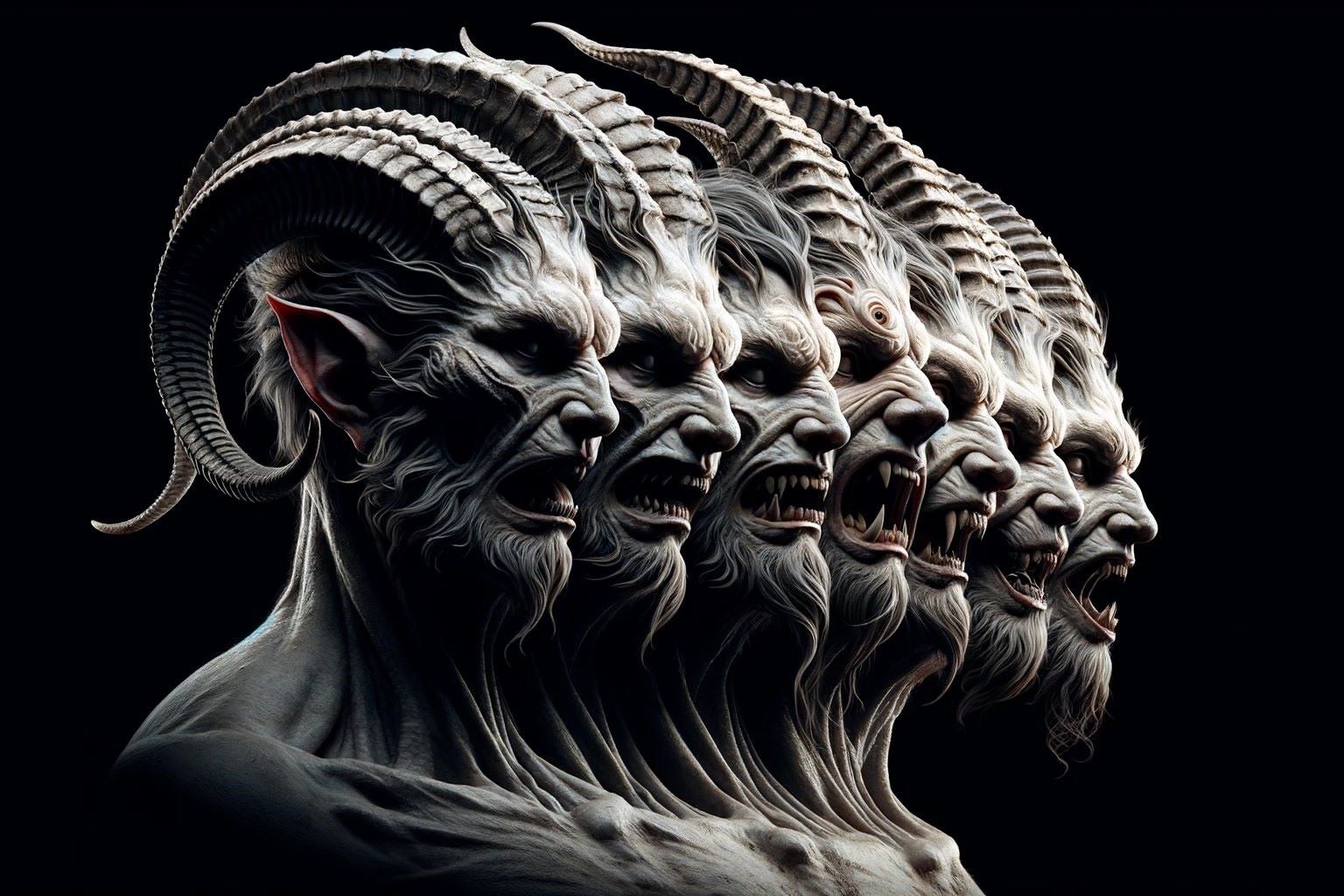
The number 666, often called the "Number of the Beast," has intrigued and mystified people for centuries. What is the significance of 666? This enigmatic figure appears in the Book of Revelation, specifically in chapter 13, verse 18, where it is described as the number of a man destined to play a crucial role in the end times. From ancient manuscripts to modern pop culture, 666 has been interpreted in various ways. Some see it as a symbol of evil, while others believe it references historical figures like the Roman Emperor Nero. This article explores 30 fascinating facts about this mysterious number, shedding light on its historical, theological, and cultural significance.
Key Takeaways:
- The number 666, known as the "number of the beast," has deep roots in Christian beliefs and symbolism, with connections to historical figures like Nero and a rich cultural impact.
- Scholars debate the original meaning of 666, with variations in ancient manuscripts and interpretations ranging from historical to eschatological. The number's enduring legacy as a symbol of evil continues to captivate audiences.
The Origin of the Number of the Beast
The number 666, often called the "number of the beast," has fascinated and terrified people for centuries. Its origins and meanings are deeply rooted in Christian eschatology and biblical numerology.
-
Origin in the Book of Revelation
The number 666 is first mentioned in the Book of Revelation, part of the New Testament. Specifically, it appears in chapter 13, verse 18, where it is written: "Here is wisdom. Let him that hath understanding count the number of the beast: for it is the number of a man; and his number is six hundred and sixty-six." -
Variations in Ancient Manuscripts
Not all ancient manuscripts of the Book of Revelation agree on the number. The oldest preserved manuscript, Papyrus 115, gives the number as 616, not 666. This discrepancy has led scholars to question whether 666 was the original number intended by the author.
Numerology and Symbolism
The number 666 isn't just a random number; it carries deep symbolic meanings in various numerological systems.
-
Greek Numerals
The Greek numeral system used in ancient manuscripts represents numbers using letters. The number 666 is written as χξϛ (chi-xi-stigma), where χ represents 600, ξ represents 60, and ϛ represents 6. -
Hebrew Gematria
In Hebrew gematria, each letter has a corresponding numeric value. The name "Nero Caesar" in Hebrew (נרון קסר) adds up to 666 when calculated using this system. This has led some scholars to interpret 666 as a reference to the Roman Emperor Nero. -
Isopsephy and Gematria
Isopsephy, a form of Greek numerology, involves assigning numeric values to letters and summing them to get a total value. This method was used to calculate the number of the Beast, adding to its mystique and interpretive complexity.
Historical and Theological Interpretations
The number 666 has been linked to various historical figures and theological concepts, each adding layers to its enigmatic nature.
-
Preterist Interpretation
Preterist theologians believe that the number 666 refers to the Roman Emperor Nero, who persecuted Christians in the 1st century AD. This interpretation is based on the idea that the Beast represents a historical figure rather than a future one. -
Historical Context
Nero's reign from 54 to 68 AD was marked by significant persecution of Christians. This historical context has led many to believe that Nero was the inspiration behind the Beast in Revelation. -
Historical Figures
Besides Nero, other historical figures have been proposed as the inspiration for the Beast. These include Caligula and Domitian, both of whom were known for their persecution of Christians.
Cultural Impact and Popular References
The number 666 has permeated popular culture, becoming a symbol of evil and the supernatural.
-
Cultural Significance
The number 666 has become a cultural icon, symbolizing evil and the Antichrist. It has been referenced in literature, music, and art, often as a metaphor for malevolence or rebellion. -
Iron Maiden's "The Number of the Beast"
The British heavy metal band Iron Maiden released an album titled "The Number of the Beast" in 1982. The album's lyrics and artwork drew inspiration from various sources, including horror movies and biblical themes. The album became a commercial success and remains a classic in the metal genre. -
Music Video Inspiration
The music video for Iron Maiden's "The Number of the Beast" features clips from classic horror movies, adding to the album's dark and mystical atmosphere. The video was initially edited to remove Eddie's final appearance due to complaints from MTV viewers. -
Popular Culture References
The number 666 has appeared in numerous works of popular culture, from films like "The Omen" to music albums like Iron Maiden's "The Number of the Beast." It continues to be a cultural touchstone for themes of evil and the supernatural.
Scholarly Debates and Manuscript Variations
The number 666 has been a subject of scholarly debate, especially regarding its original form and meaning.
-
Historical Manuscripts
Besides Papyrus 115, other ancient manuscripts like Codex Ephraemi Rescriptus also give the number as 616. These variations highlight the complexity of textual transmission in ancient times. -
Scholarly Debate
Scholars continue to debate the original number intended by the author of Revelation. Some argue that 666 was substituted for 616 due to its triangular nature or because it is analogous to the number 888, which represents Jesus in Greek numerology. -
Numerological Interpretations
Numerological interpretations of 666 range from seeing it as a symbol of human imperfection (six being a number often associated with humanity) to more esoteric interpretations involving the sum of the first 36 natural numbers.
Theological and Eschatological Context
In Christian eschatology, the number 666 holds significant meaning, often linked to the end times and the Antichrist.
-
Biblical Numerology
Biblical numerology involves assigning symbolic meanings to numbers based on their appearance in scripture. The number 666 is often seen as a counterpoint to the number 888, which represents Jesus Christ. -
Eschatological Context
In the context of Christian eschatology, the number 666 represents a figure who will play a significant role in the end times. This figure is often associated with the Antichrist or Satan. -
Theological Debates
Theological debates surrounding the number 666 focus on its identity and significance. Some see it as a literal figure while others interpret it metaphorically or allegorically.
Artistic and Cultural Representations
The number 666 has inspired various forms of artistic expression, often symbolizing evil or malevolence.
-
Symbolism in Art and Literature
The number 666 has been used symbolically in various forms of art and literature. It often represents evil or malevolence, serving as a shorthand for something dark and foreboding. -
Artistic Representations
Artistic representations of the number 666 often involve dark and ominous imagery. This reflects its cultural significance as a symbol of evil or malevolence. -
Musical Influences
Musical influences on the number 666 are evident in works like Iron Maiden's album. The band's use of horror movie clips in their music video further underscores the dark and mystical themes associated with this number.
Historical Accuracy and Scholarly Consensus
Understanding the historical context and scholarly debates surrounding the number 666 is crucial for a comprehensive interpretation.
-
Historical Accuracy
Historical accuracy is crucial when interpreting the number 666. Understanding the historical context in which Revelation was written helps scholars better grasp its intended meaning. -
Historical Manuscript Variants
Historical manuscript variants like Papyrus 115 and Codex Ephraemi Rescriptus highlight the complexities of textual transmission in ancient times. These variations underscore the need for careful scholarship when interpreting biblical texts. -
Scholarly Consensus
Scholarly consensus on the number 666 remains divided. While some argue for 666 as the original number, others propose that it was substituted for 616 due to various reasons such as triangular nature or analogy with Jesus' number.
Enduring Legacy and Cultural Iconicity
The number 666 continues to captivate the imagination, serving as a powerful symbol in various cultural and theological contexts.
-
Cultural Impact
The cultural impact of the number 666 cannot be overstated. It has become a ubiquitous symbol in Western culture, representing everything from evil to rebellion. -
Cultural Iconicity
The number 666 has become a cultural icon, symbolizing evil or malevolence in popular culture. Its iconic status is evident in its frequent appearance in films, music albums, and literature. -
Eschatological Themes
Eschatological themes in Revelation emphasize the ultimate battle between good and evil. The number 666 serves as a symbol of this conflict, representing a figure who embodies evil in its most profound form. -
Historical Figures and Their Numbers
Historical figures like Nero and Caligula have been associated with the number 666 due to their persecution of Christians. This historical context adds depth to the eschatological themes presented in Revelation. -
Theological Interpretations
Theological interpretations of the number 666 range from literal to metaphorical. Some see it as a literal figure while others interpret it allegorically or symbolically, reflecting different theological perspectives on its significance. -
Enduring Legacy
The enduring legacy of the number 666 lies in its cultural significance and theological importance. It continues to captivate audiences across various disciplines, from biblical studies to popular culture, serving as a powerful symbol of evil and the supernatural.
The Enduring Enigma of 666
The number 666, often called the "number of the beast," has fascinated people for centuries. Rooted in the Book of Revelation, this number has sparked countless interpretations and debates. From its possible connection to Emperor Nero to its cultural impact in music and art, 666 remains a symbol of intrigue and mystery. Variations in ancient manuscripts, like the 616 found in Papyrus 115, add layers to its enigmatic nature. Whether viewed through the lens of biblical numerology, historical context, or popular culture, 666 continues to captivate our imagination. Its legacy as a symbol of evil and the supernatural endures, making it a topic of endless fascination and study. Understanding 666 isn't just about numbers; it's about exploring the depths of human belief and the stories we tell to make sense of the world.
Frequently Asked Questions
Was this page helpful?
Our commitment to delivering trustworthy and engaging content is at the heart of what we do. Each fact on our site is contributed by real users like you, bringing a wealth of diverse insights and information. To ensure the highest standards of accuracy and reliability, our dedicated editors meticulously review each submission. This process guarantees that the facts we share are not only fascinating but also credible. Trust in our commitment to quality and authenticity as you explore and learn with us.

